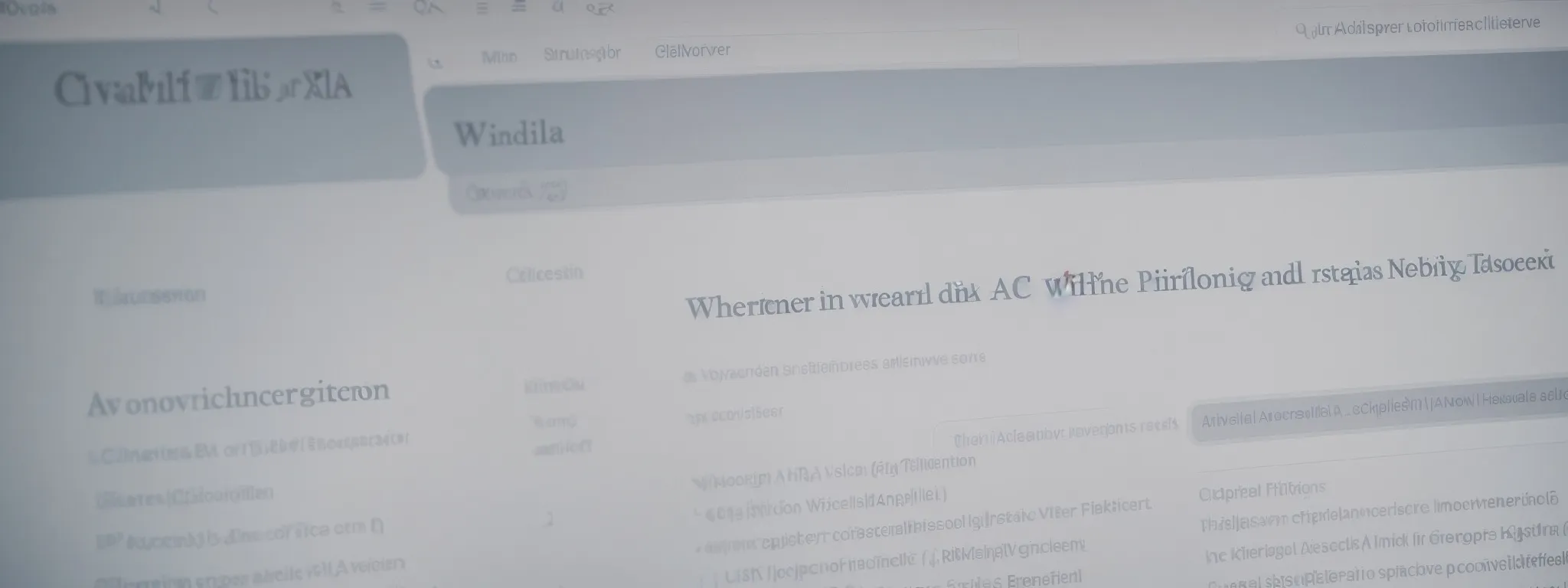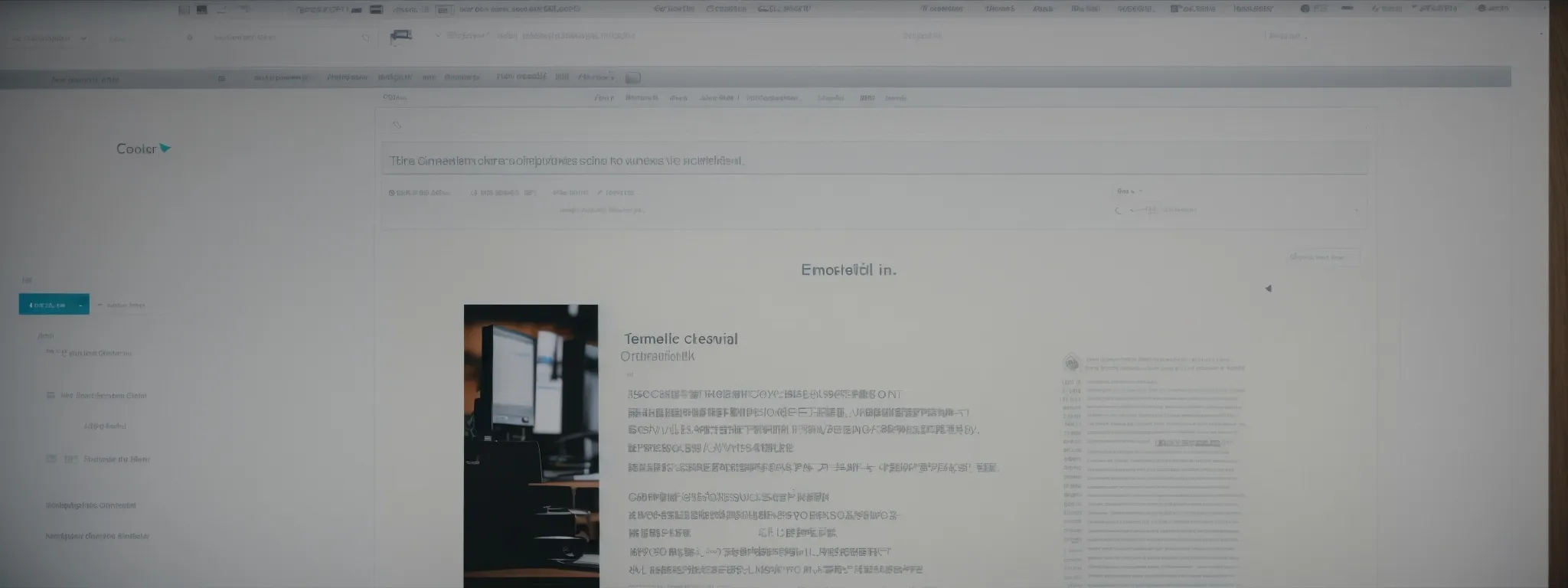Wikipedia SEO
Maximizing Visibility: Understanding Wikipedia SEO Practices Navigating the intricate landscape of Wikipedia’s SEO practices can be a formidable challenge, but for those armed with the right knowledge […]
Maximizing Visibility: Understanding Wikipedia SEO Practices
Navigating the intricate landscape of Wikipedia’s SEO practices can be a formidable challenge, but for those armed with the right knowledge and strategies, it can lead to significant search visibility.
This article offers a thorough exploration of the vital components that coalesce into an effective Wikipedia SEO strategy, providing insights into crafting authoritative content, managing one’s editorial reputation, and leveraging Wikipedia’s unique link ecosystem.
With a focus on alignment with Wikipedia’s stringent guidelines, one can enhance the SEO value of their contributions to this vast knowledge repository.
Keep reading to unveil the tactics that will elevate your Wikipedia content to greater heights in search engine rankings.
Key Takeaways
- Wikipedia SEO Requires Adherence to the Platform’s Content Guidelines and a Nuanced Approach to Keyword Incorporation
- Strategic Internal and External Linking Within Wikipedia Articles Can Enhance SEO and Reader Navigation
- Regular Monitoring and Updating of Wikipedia Content Are Essential for Maintaining Its Relevance and SEO Value
- Constructive Engagement on Wikipedia’s Talk Pages Is Crucial for Editor Credibility and Article Optimization
- Understanding and Adapting to Wikipedia’s Policy Updates Is Vital for Effective Content Compliance and Search Optimization
Essential Elements of Wikipedia SEO Strategy

Wikipedia, recognized as the pinnacle of collective knowledge online, presents a unique opportunity for enhancing visibility through adept SEO tactics.
The cultivation of a Wikipedia SEO strategy necessitates a nuanced understanding of the platform’s stringent content guidelines, ensuring that keyword incorporation enhances the article’s utility rather than detracting from its purpose.
Entities must aim to create content that not only resonates with Wikipedia’s mission of providing factual, unbiased information but is also meticulously updated to maintain relevance in a rapidly evolving digital landscape.
The essential elements of Wikipedia SEO strategy require a profound commitment to these practices, ensuring that the content remains a credible and valuable resource in the expansive realm of search engine results.
Understanding Wikipedia’s Content Guidelines
Elevating one’s presence through Wikipedia requires strict adherence to the encyclopedia’s content protocols. To ensure the SEO impact on Wikipedia remains positive, contributors must understand that Wikipedia prioritizes accuracy, neutrality, and verifiability above all else.
Being seen as a credible source within Wikipedia’s ecosystem mandates that content creators follow an exacting standard of guidelines: the Cornerstones of Wikipedia’s editorial principles include the requirement that all information be attributable to a reliable source, abstaining from original research, and presenting content without bias.
- Accuracy: Information contributed to Wikipedia must be verifiable and supported by reputable and secondary sources.
- Neutrality: Wikipedia insists upon a neutral point of view, eschewing promotional content or personal opinions.
- Verifiability: Every fact must be accompanied by a citation from an authoritative source, thereby ensuring its reliability.
Incorporating Keywords Into Wikipedia Articles
Integrating keywords into Wikipedia articles is an exercise in precision and subtlety. The pursuit involves selecting terms with relevance to the subject, yet without undermining Wikipedia’s encyclopedic tone or its stringent guidelines.
Introducing keywords into Wikipedia entries should align seamlessly with the natural flow of information. This technique typically contributes to an article’s visibility on search engines, as long as it adheres to Wikipedia’s editing policies and maintains informational integrity:
| SEO Component | Implementation on Wikipedia |
|---|---|
| Keyword Relevance | Aligning keywords with the topical matter of the entry |
| Content Quality | Maintaining an encyclopedic tone and factual accuracy |
| Editorial Guidelines | Ensuring compliance with Wikipedia’s strict editing policies |
Aligning Your Content With Wikipedia’s Mission
For entities seeking to utilize Wikipedia to heighten their SEO impact, it is imperative to resonate with the platform’s ideological framework centered on disseminating knowledge. Crafting contributions that serve the user base by adding clarity and substance to topics ensures alignment with Wikipedia’s mission.
Content that thrives on Wikipedia does so by mirroring the site’s dedication to free information, available to all. Key to this is creating fact-based, neutral content that advances understanding without any commercial underpinnings, thus upholding the values at the core of Wikipedia’s existence.
| SEO Component | Implementation on Wikipedia |
|---|---|
| Content Value | Sourcing factual data to serve Wikipedia’s educational goals |
| Editorial Integrity | Adhering to Wikipedia’s neutrality and no-promotional stance |
| Community Trust | Engaging with Wikipedia’s user base to enhance article credibility |
Regular Monitoring and Updates for Article Relevance
Ensuring an article’s continued relevance on Wikipedia is akin to captaining a ship through ever-changing seas: regular oversight is key. Contributors must vigilantly update content to reflect the latest information and developments, lest the article become a digital relic, untouched by the ebb and flow of new knowledge.
- Initial content creation sets sail with precise and verified information.
- Navigating through continually emerging data requires timely article adjustments.
- Ensuring smooth sailing demands a balance between the depth of new information and the maintenance of an article’s core integrity.
Maintaining a Wikipedia entry’s relevance thus involves a dedicated process of content curation and enhancement. This dynamic effort enables the content to remain a reliable beacon within the search engine results, amplifying its utility and accessibility for inquisitive minds across the globe.
Crafting High-Quality Wikipedia Articles

In the dynamic realm of search engine optimization, Wikipedia stands out as a platform where authority and visibility go hand in hand.
Professionals aiming for elevated search presence meticulously craft content for Wikipedia, understanding its dual role as an information powerhouse and a beacon for SEO efforts.
The process unfolds through comprehensive research and the creation of authoritative content, which invites scrutiny under Wikipedia’s exacting standards.
By ensuring an unwavering commitment to a neutral point of view, judiciously integrating internal links, and fortifying articles with references and citations, contributors can substantially bolster credibility and, by extension, the SEO value of the content.
These pillars guide the steadfast alignment of articles with the community’s expectations while optimizing their visibility in the search engine landscape.
Researching and Writing Authoritative Content
In the landscape of Wikipedia content creation, thorough research lays the foundational bedrock. Professionals meticulously analyze to extract pertinent details, ensuring each submission becomes a reservoir of authoritative data, reflective of subject-depth and cognizant of the evolving knowledge corpus.
Upon establishing a solid research foundation, the craft of writing for Wikipedia moves to center stage: composition happens with an alertness to accuracy and a strict adherence to editorial guidelines. Well-researched content transitions into well-crafted text, transforming into articles that stand as exemplars of Wikipedia’s high standards:
| Research Phase | Writing Phase |
|---|---|
| Gathering comprehensive, factual data from reliable sources. | Articulating with precision, aligning with Wikipedia’s tone and style. |
| Analyzing the relevance and timeliness of information. | Adapting to Wikipedia’s stringent citation requirements to support veracity. |
Ensuring Neutral Point of View in Articles
Ensuring an unbiased perspective in Wikipedia contributions is pivotal, functioning as a core pillar in establishing the legitimacy of content provided. The overarching goal is to present information based on a balance of perspectives, rather than advancing any particular standpoint or agenda, thereby preserving the global trust vested in Wikipedia’s reservoir of information.
Contributors to Wikipedia staunchly navigate away from personal bias, striving to distill content through an impartial lens that encapsulates diverse viewpoints. This crucial stance on neutrality not only aligns with the encyclopedia’s foundational policies but also solidifies the article’s standing in search engine results, safeguarding its integrity and utility as a trusted resource.
Strategic Placement of Internal Links
The utilization of internal links within Wikipedia articles is not merely a navigational tool for readers but a strategic element for enhancing SEO. Thoughtfully inserted links connecting relevant Wikipedia pages can facilitate a smoother user experience and signal an article’s interconnectedness within the vast Wikipedia ecosystem.
These links act as conduits for passing authority between pages, strengthening the overall link profile and increasing the search visibility of the connected articles. Strategic internal linking fosters a network of information, reinforcing topical relevance and encouraging deeper exploration of Wikipedia’s knowledge base.
| SEO Aspect | Internal Link Impact |
|---|---|
| User Navigation | Enhancement of the reader’s journey through related topics |
| Topic Relevance | Establishment of relationships between different content areas |
| SEO Benefits | Improvement of articles’ search engine visibility and authority |
Adding References and Citations for Credibility
The integration of references and citations is a fundamental practice for those contributing to Wikipedia; it serves as the backbone of article credibility. By meticulously sourcing information and embedding citations from authoritative resources, contributors fortify their articles’ reputation and enhance their reliability in the domain of search engines.
Embedding these scholarly references is more than just a formality; it signifies a commitment to Wikipedia’s dedication to verifiable content. This firm adherence to documenting sources not only satisfies the curious minds seeking information but also bolsters the articles’ standings, ensuring they emerge prominently in search engine queries.
Building Your Reputation as a Wikipedia Editor

Establishing oneself as a respected Wikipedia editor is a path paved with diligence and adherence to the platform’s comprehensive guidelines.
Renowned editors embark on their journey with incremental achievements, beginning with minor yet impactful edits that collectively enhance the encyclopedia’s vast repository of knowledge.
As these contributors deepen their engagement with the Wikipedia community, they adhere unwaveringly to Wikipedia’s scrupulous editing policies, contributing meaningfully to talk pages and discussions.
This participative approach not only enriches the collaborative environment intrinsic to Wikipedia but also cements an editor’s reputation within the meticulous framework that defines Wikipedia’s standards of excellence.
Starting With Minor Edits on Wikipedia
Embarking on the voyage as a Wikipedia editor often commences with modest yet meaningful amendments. These preliminary edits serve as both a demonstration of the editor’s commitment to Wikipedia’s ethos and a learning experience, familiarizing them with the community’s standards and practices.
Through these initial forays into editing, contributors sharpen their skills in revising content for clarity, rectifying inaccuracies, and ensuring alignment with Wikipedia’s rigorous requirements. As editors gradually build a portfolio of contributions, their credibility within the Wikipedia community starts to flourish, laying the groundwork for more substantial future contributions.
Engaging With the Wikipedia Community
Effectively engaging with the Wikipedia community is an essential step for editors seeking to enhance their visibility and reputation. It entails active participation in discussions on talk pages, where they provide insights, resolve disputes, and contribute to consensus-building on content improvements. Through this collaborative engagement, editors not only showcase their expertise but also forge valuable connections within the community, which can aid in the elevation of their editorial standing.
Wikipedia editors who maintain a consistent presence, offering constructive feedback and staying responsive to community inquiries, find that their efforts are recognized and valued by peers. This interaction reinforces the editor’s standing as a collaborative and reliable contributor, setting a precedent for impactful contributions to the lexicon of knowledge that Wikipedia embodies, while also subtly influencing their associated content’s search engine optimization effectiveness.
Adhering to Wikipedia’s Editing Policies
For Wikipedia editors aiming to establish and maintain a respected presence, strict adherence to the encyclopedia’s editing policies is non-negotiable. These policies form the bedrock upon which the credibility and orderliness of Wikipedia’s content are built, guiding contributors to uphold the standards of objectivity and comprehensiveness that the platform is renowned for.
Abiding by these directives, editors ensure their contributions meet the platform’s quality standards and remain in good standing within the community. It is a disciplined process: edit by edit, editors who demonstrate a consistent compliance with Wikipedia’s established policies not only enrich the content but also solidify their own reputations as trusted sources of knowledge.
| Editing Principle | Core Objective | Community Outcome |
|---|---|---|
| Verifiability | Ensure all content is backed by reliable sources. | Builds an encyclopedia that users can trust for accurate information. |
| Neutrality | Maintain an impartial perspective across articles. | Cultivates an unbiased repository of knowledge for readers worldwide. |
| No Original Research | Avoid contributing unpublished facts, hypotheses, or arguments. | Preserves the integrity of content by promoting scholarly consensus. |
Contributing to Talk Pages and Discussions
Participating actively in talk pages and discussions is an integral aspect of cultivating a robust reputation as a Wikipedia editor. These platforms allow editors to delve into the fabric of existing articles, offering suggestions for improvement and collaborating towards consensus with fellow contributors.
By engaging in these intellectual exchanges, editors underscore their dedication to Wikipedia’s core values, joining the collective effort to refine the quality of information presented to the world. Their contributions to these dialogues demonstrate a commitment to the meticulous craft of knowledge curation that Wikipedia embodies.
Understanding Wikipedia’s Link Structure

Within the intricate tapestry of Wikipedia’s knowledge base, the strategic use of link structures plays a vital role in enhancing an article’s visibility and SEO efficacy.
Distinguishing between internal and external links is fundamental to understanding the architecture of Wikipedia and optimizing content for search engines.
Moreover, the judicious placement and formatting of links can dramatically influence an article’s search rankings, making an understanding of these elements critical for any search engine optimizer.
Additionally, the use of red links serves as a beacon for uncovering uncharted territories within Wikipedia, providing unique content opportunities.
Aligning with best practices for link utilization ensures that the full potential of a Wikipedia page’s SEO impact is realized, benefiting readers and contributors alike.
Distinguishing Between Internal and External Links
In the realm of Wikipedia, the distinction between internal and external links is not only crucial for navigation but also for the integrity and ranking of an article. Internal links connect readers to other Wikipedia articles, enhancing the structure and cohesiveness of the encyclopedia, while external links provide references and additional reading, directing users to resources outside the Wikipedia domain.
Strategic application of internal links strengthens the interconnectedness of topics within Wikipedia, amplifying user engagement and information retention. External links, on the other hand, serve as a testament to the credibility of the content, offering verification from independent, authoritative sources, thus boosting the trustworthiness of the article in the eyes of external search engines:
| Link Type | Purpose | SEO Impact |
|---|---|---|
| Internal Links | Connect to related Wikipedia content | Enhances site structure and topic relevancy |
| External Links | Cite authoritative external sources | Increases content credibility and trust |
Impact of Link Placement and Formatting on SEO
Within Wikipedia’s labyrinthine network, link placement and formatting hold significant sway in determining an article’s footprint on search engine optimization. Properly structured links that guide readers through a website increase dwell time and contribute to an article’s authority, while ill-considered links can confuse readers and search engine algorithms alike.
Consistent and correct formatting of links is paramount, as it ensures seamless navigation and portrays a commitment to Wikipedia’s professional standards: a detail not unnoticed by search engines assessing the caliber of a web page. The alignment of these SEO minutiae elicits enhanced visibility, inviting a larger audience to the page.
| SEO Aspect | Role of Links | Impact on Wikipedia Article |
|---|---|---|
| Link Placement | Guides reader navigation | Improves user experience and article authority |
| Link Formatting | Maintains Wikipedia’s professional standards | Increases article credibility and visibility in search results |
Using Red Links to Identify Content Opportunities
Red links on Wikipedia signal the absence of an article on a given subject, presenting an untapped venture for content creators to explore. These unlinked terms serve not only to highlight gaps within the encyclopedia but also offer domains where fresh, well-researched articles can be developed, providing new avenues for reader engagement and information dissemination.
For SEO professionals and Wikipedia contributors alike, red links represent fertile ground for establishing relevance and authority on niche topics. Crafting articles that meet Wikipedia’s stringent standards for these red-linked subjects can significantly improve a contributor’s visibility and influence within the Wikipedia community, while simultaneously enriching the platform’s comprehensive knowledge base.

In an era where digital prominence is paramount, understanding Wikipedia’s NoFollow policy is essential for any entity looking to enhance its online visibility.
This particular aspect of Wikipedia’s framework governs how outbound links contribute, or rather, do not directly contribute, to the page rank and overall SEO landscape of an external site.
While the NoFollow attribute indicates to search engines that a hyperlink should not influence the ranking of the link’s target in the search engine’s index, a deeper interpretation reveals that such links on Wikipedia can still wield indirect SEO benefits.
Professionals seeking to optimize their digital strategy must grasp these nuances to effectively navigate the complex interplay between Wikipedia’s NoFollow policy, PageRank, and the subtler aspects of SEO enhancement.
Explaining Wikipedia’s NoFollow Link Attribute
Grasping the concept of Wikipedia’s NoFollow policy is a critical step for any professional seeking to leverage Wikipedia’s potential for driving visibility. This policy, which entails assigning a NoFollow attribute to all external links, informs search engines that the hyperlink should not sway the ranking algorithm for the link’s destination in search engine indices.
Though Wikipedia’s NoFollow directive might seem to reduce an external link’s direct influence on search engine optimization, astute professionals recognize the attribute’s capacity for generating indirect SEO benefits. By fostering a connection with Wikipedia’s authoritative domain, the NoFollow links can enhance the trust and credibility of a linked site in ways that transcend quantitative PageRank metrics.
How NoFollow Links Affect PageRank and SEO
NoFollow links, by design, were created to instruct search engines to disregard a particular link in terms of contributing to PageRank, an algorithm used by Google to rank web pages in their search engine results. Despite this, the presence of NoFollow links on a reputed site like Wikipedia can lend credibility and demonstrate the referenced domain’s value, potentially leading to increased organic traffic driven by user interest rather than algorithmic calculations.
The broader impact on SEO from Wikipedia’s NoFollow links emerges from their ability to generate indirect benefits, such as heightened brand recognition and subsequent search interest. Although they may not directly influence search engine rankings, these links can cultivate a brand’s digital footprint by ensuring visibility in a context that endorses authority, thereby supporting long-term organic growth strategies.
Indirect SEO Benefits of Wikipedia’s NoFollow Links
Wikipedia’s NoFollow links may not influence direct search engine rankings; however, they can bolster a website’s perceived authority. Such links are situated within Wikipedia’s domain that is universally recognized for its rigorous editorial standards, which can inadvertently raise a site’s prestige by association, often prompting users to trust and explore its content independently from search engine recommendations.
The strategic placement of NoFollow links on Wikipedia carries the potential to drive meaningful engagement by serving as a conduit between the world’s largest encyclopedia and the linked website. As users inherently trust Wikipedia as a credible information source, referrals through these links can translate into increased brand visibility, stimulating organic traffic that complements conventional SEO efforts.
Optimal Techniques for Wikipedia Link Placement

In the landscape of digital prominence, Wikipedia emerges as a formidable channel for enhancing visibility through deft SEO practices.
The art of judicious link placement within its pages calls for a strategic understanding of Wikipedia’s internal structure and editorial guidelines.
This segment ventures into the methods by which professionals can pinpoint relevant articles for link insertion, employ external links with precision to uphold the encyclopedia’s integrity, and circumnavigate the potential pitfalls associated with link spamming.
Navigating these waters adeptly not only conforms with Wikipedia’s stringent policies but also elevates the SEO value of content, ensuring a harmonious balance between informational wealth and online visibility.
Identifying Relevant Articles for Link Insertion
Mastering the integration of links within Wikipedia hinges on pinpointing articles with a natural affinity to the subject matter of the external content. Discerning professionals adeptly navigate the encyclopedia’s categories and talk pages, extracting articles in need of citation or enhancement, thereby aligning their contributions meaningfully with existing discourse and knowledge gaps.
Success in link insertion is gauged not simply by the placement of a hyperlink but by the relevance and context it brings to the Wikipedia entry. Editors deftly evaluate the scope of the article, ensuring that each link serves to substantiate and enrich the topic, thereby providing significant value to the reader and maintaining Wikipedia’s standard of a rich, interconnected source of information.
Using External Links Appropriately in Articles
In the digital tapestry of Wikipedia, the sensible use of external links in articles underscores their credibility and reinforces their informative value. These links are instrumental when citing sources, extending further reading opportunities to users, and substantiating facts presented within the body of Wikipedia entries.
However, their inclusion must reflect Wikipedia’s stringent standards for reliable and relevant content: each external link should lead to reputable, authoritative sites that directly corroborate the article’s subject matter. The judicious placement of these external links can be integral to an article’s perceived authority and its ability to serve as a conduit for further knowledge.
| Aspect | Function | Standard |
|---|---|---|
| Source Citing | Corroborate information within an article | Reliability of linked content |
| Further Reading | Providing additional information to users | Relevance to article topic |
| Fact Substantiation | Supporting claims made in the entry | Authority of the reference |
Avoiding Link Spamming and Its Consequences
In the quest for enhanced digital presence, exercising restraint with link placement on Wikipedia is paramount; this curtails the incidence of link spamming. Overzealous insertion of external links can be construed as an attempt to manipulate search rankings and may attract punitive actions, including the removal of links or even the banning of offenders from the platform.
Adhering to Wikipedia’s guidelines for external linking is therefore critical to maintain the encyclopedic integrity and avoid undermining trust in content. Those who observe this ethos not only contribute to the richness of Wikipedia’s resources but also uphold their own reputations as credible content creators with respects to the collaborative nature of the site.
| SEO Practice | Impact on Wikipedia | Consequences for Offenders |
|---|---|---|
| Responsible Linking | Enhances article quality and resourcefulness | Preservation of editor privileges |
| Link Spamming | Compromises information authenticity | Risk of link removal and editor sanctions |
Enhancing Article Visibility Through Categories

As the digital landscape becomes increasingly competitive, establishing the prevalence of Wikipedia entries hinges on more than just content quality; it also involves savvy categorization.
Incorporating articles into appropriate categories not only aligns them within Wikipedia’s robust structural hierarchy but also bolsters their visibility through enhanced search engine discoverability.
This meticulous process of category selection and comprehension stands as a fundamental practice for those aiming to optimize the SEO value of their contributions, creating pathways for heightened article exposure and facilitating easier navigation for users delving into related topics.
Selecting the Right Categories for Your Article
Choosing appropriate categories on Wikipedia for an article is an exercise in strategic indexing, echoing a librarian’s thoughtful placement of a book on the right shelf. It requires an intimate understanding of the article’s content and an awareness of the broader subject landscape within Wikipedia to facilitate the right connections. Meticulously selected categories help search engines and readers alike to navigate the web of knowledge more efficiently, thereby bolstering an article’s discoverability and relevance.
Professionals adept at Wikipedia SEO practices recognize that aligning an article with the most relevant categories serves as a beacon for enhanced visibility. The precision of such categorization ensures that articles are part of a coherent cluster, enriching the user’s learning path and providing a direct line of sight for those searching for specialized information, thus improving the article’s prominence in search engine results.
Understanding the Hierarchical Structure of Categories
Grasping Wikipedia’s categorization system is paramount for search optimization, as it reflects a layered blueprint of knowledge organization. Editors maneuver through this hierarchical maze to identify the most appropriate placement for an article, ensuring that it resonates with the collective framework and is intuitively accessible to those seeking specialized knowledge.
Proficiency in the structural nuances of Wikipedia categories empowers professionals to seamlessly integrate articles within the fabric of related subjects, a strategic move that augments an article’s search visibility. The intricacy of this architecture mandates a comprehensive approach, optimizing an article’s relevance and extending its reach to the target audience effectively.
How Categories Impact SEO and Article Discovery
Categorization on Wikipedia extends beyond mere organization; it is a cornerstone for enhancing an article’s SEO profile and discoverability. By thoughtfully aligning an article with relevant categories, contributors effectively signal its topic to search engines, leading to improved rankings and heightened visibility in related search queries.
This categorization is pivotal for guiding readers toward a streamlined discovery process. As users delve into specific subjects, properly categorized articles emerge seamlessly, increasing the probability of user engagement and reinforcing the article’s role in a comprehensive exploration of the topic.
The Role of Wikipedia Page Views in SEO

In the intricate dance of search engine optimization, Wikipedia page views play a subtle yet significant role.
For professionals and content creators, comprehending the intricacies of these views is crucial to understanding user engagement and interest.
Analyzing Wikipedia page view statistics sheds light on the ebb and flow of reader attention, offering a data-driven foundation upon which to bolster article visibility.
Knowledge of how to leverage these insights paves the way for strategic SEO maneuvers, enabling stakeholders to adapt content and navigation in alignment with emerging trends and reader behaviors.
Interpreting these patterns provides invaluable SEO insights, serving as an analytical compass to guide content optimization on the platform and amplify impact across search engines.
Analyzing Wikipedia Page View Statistics
Analyzing Wikipedia page view statistics offers unique insights into article performance and reader interest, serving as a crucial metric for gauging content engagement. By monitoring fluctuations in views, SEO specialists can detect patterns and glean actionable information that will inform content refinement strategies targeting enhanced search rankings.
Wikipedia’s page view data, reflective of real-world user behavior, equips content creators with the knowledge necessary to tweak and tailor content for maximum search engine visibility. This analytical approach not only identifies high-traffic articles but also highlights potential areas for SEO improvement, leading to data-informed adjustments that can elevate an article’s prominence in search results.
Leveraging Page Views to Improve Article Visibility
Leveraging page views on Wikipedia can directly inform content optimization strategies, enabling creators to fine-tune articles and enhance visibility within search engine rankings. Through careful analysis of page view data, contributors can discern reader interest levels, guiding targeted updates and adjustments that resonate with current search behaviors and preferences.
By interpreting these visitor trends, professionals extrapolate the topics and areas that captivate readers, directing their efforts towards fortifying these subjects with more comprehensive information and clarity. Such strategic enhancements bolster the value proposition of articles, facilitating higher search engine positioning and extended reader engagement.
Interpreting Page View Trends for SEO Insights
Interpreting page view trends on Wikipedia offers valuable SEO insights, facilitating the identification of content that genuinely piques audience interest. By analyzing the trajectory and volume of page views over time, search engine optimizers can pinpoint and prioritize topics that warrant further development or refinement, tailoring their approach to tap into the prevailing reader curiosity.
These insights assist in refining Wikipedia’s SEO strategies, enabling professionals to adjust their content to align more closely with dynamic user search patterns. Effective interpretation of page view trends allows for the intelligent allocation of resources towards enhancing the SEO potential of the most impactful articles, thus driving both visibility on Wikipedia and across broader search engine results pages.
Monitoring and Maintaining Your Wikipedia Presence

Establishing a prominent presence on Wikipedia transcends the mere act of creating content; it necessitates vigilant monitoring and proactive maintenance to ensure sustained impact and relevance.
A multifaceted approach is essential, where setting alerts for article changes and discussions becomes integral to staying informed of any modifications.
Updating contributions regularly is crucial to keep the content current and pertinent, safeguarding its position in a competitive, knowledge-driven digital expanse.
Moreover, addressing potential challenges such as article deletions and user bans requires a thorough understanding and swift action to preserve one’s standing and contribution within the Wikipedia community.
For professionals committed to refining their digital strategy, mastering these administrative maneuvers on Wikipedia is indispensable in securing and advancing their online visibility.
Setting Alerts for Article Changes and Discussions
Proactive monitoring within Wikipedia’s dynamic landscape is essential for maintaining the SEO value of articles. Setting up alerts for changes and discussions associated with one’s contributions enables editors to respond promptly to revisions or conversations that may influence content integrity and search performance.
Engagement with the Wikipedia community is bolstered by staying apprised of article developments through these notifications. Real-time alerts empower contributors to participate actively in maintaining the accuracy, relevancy, and search optimization of their entries within this powerful knowledge repository.
Updating Your Contributions to Maintain Relevance
Continual updates to one’s contributions on Wikipedia are paramount for retaining the relevance and accuracy of the content. As the world’s information continues to advance, Wikipedia entries must be meticulously maintained to reflect the latest knowledge and developments, ensuring that the information remains valuable for readers and effective for search engine optimization.
Prompt updates not only underscore the contributor’s dedication to quality but also signal to search engines the enduring relevance of the content, a critical element in achieving sustainable visibility. This active approach enhances the likelihood that Wikipedia entries remain prominent in search rankings and useful for the community:
- Systematic review and enhancement of content to match current data and trends.
- Adjustments to reflect discoveries, emerging consensus, or evolving standards within the subject area.
- Engagement with Wikipedia’s editing community to ensure contributions adhere to the most recent guidelines and practices.
Dealing With Article Deletions and User Bans
Navigating the complexities of Wikipedia’s community guidelines is critical, as infractions can lead to article deletions or user bans, potentially diminishing an organization’s online presence. To counteract such incidents, professionals must exhibit a proactive stance, swiftly engaging in the resolution process delineated by Wikipedia, to challenge deletions or advocate for the restoration of editing privileges. This diligent response helps to safeguard one’s contributions and the continuity of their Wikipedia SEO strategy.
In the event of an article deletion or user ban, it is imperative to understand the underlying reasons and to act within Wikipedia’s framework to address any issues. Professionals adept in Wikipedia SEO practices should collaborate with the community and moderators, presenting clear, verifiable information to rectify any content disputes or misunderstandings, demonstrating a commitment to Wikipedia’s standards and an earnest effort to contribute valuable knowledge to the platform.
Utilizing Talk Pages for SEO Strategy

In the pursuit of maximizing online visibility, professionals must master not only the content but also the collaborative features of Wikipedia, notably the utilization of talk pages.
This interactive environment provides a crucial venue for editors to engage in dialogue, propose edits, and resolve disputes that could affect article quality and SEO.
Talk pages serve as the backbone of Wikipedia’s editorial procedure and hold considerable sway in the strategic development and optimization of content to ensure its prominence in search engine rankings.
Engaging With Other Editors on Talk Pages
Engaging with other editors on talk pages is an intrinsic part of the Wikipedia ecosystem that directly correlates to the successful implementation of an SEO strategy. Through these interactions, professionals can gain insights into community opinions and editorial consensus, which can be crucial for making informed updates that align with Wikipedia’s stringent guidelines and enhance an article’s SEO.
Dedicated involvement on talk pages not only facilitates constructive dialogue but also establishes an editor’s credibility and collaboration within the Wikipedia community. This visibility can contribute to the sustained health and optimization of content, indirectly supporting an article’s SEO by fostering a network of relationships that underpin the robustness of the entry.
Using Talk Pages to Discuss Potential Edits
Wikipedia’s talk pages serve as the cornerstone for discussion and collective decision-making regarding the evolution of article content. They provide a transparent platform for editors to propose modifications, hash out details, and agree on enhancements that align with SEO best practices.
Strategic deployment of these collaborative pages ensures that potential edits are scrutinized and optimized for search visibility before being made live. Editors foster a dynamic interchange of ideas on talk pages, directly influencing the crafting and refinement of content to meet Wikipedia’s high standards of information dissemination:
- Proposed changes receive community input, ensuring editorial accuracy and completeness.
- Consensus on talk pages reflects a collective commitment to both the article’s integrity and its SEO optimization.
- Well-discussed edits result in more stable content that withstands scrutiny and performs better in search engine rankings.
Resolving Content Disputes to Maintain Article Quality
At the heart of Wikipedia’s collaborative nature lies the resolution of content disputes on talk pages, an essential aspect in maintaining the quality and credibility of articles. A well-resolved dispute not only clarifies inaccuracies but also reinforces an article’s integrity, proving indispensable for its SEO viability and user trust.
| Dispute Aspect | Resolution Mechanism | SEO Benefit |
|---|---|---|
| Content Accuracy | Community Consensus | Enhanced Credibility |
| Editorial Neutrality | Discreet Moderation | Improved Relevance |
| Source Verifiability | Reliable References | Increased Authority |
By engaging in a constructive discourse aimed at resolving disputes, editors ensure the consistency and reliability of Wikipedia’s content. Conflict resolution on talk pages exemplifies a commitment to editorial excellence, vital for fostering articles that are not just informative, but also optimized for search engine indexing and visibility.
Staying Updated With Wikipedia’s Guidelines

Maintaining relevance on Wikipedia, a cornerstone of knowledge with wide-reaching SEO implications, demands a dynamic approach to its ever-evolving landscape.
Professionals seeking to leverage Wikipedia for enhanced visibility must commit to ongoing education in the platform’s operational paradigms – a task encompassing regular reviews of the Manual of Style, staying abreast of policy updates, and deftly adapting SEO tactics in accordance with new guidelines.
This continuous learning curve is pivotal for navigating Wikipedia’s complex editorial environment and for ensuring that content not only adopts but flourishes under the latest standards and practices.
Regularly Reviewing Wikipedia’s Manual of Style
In the intricate arena of Wikipedia SEO, regular perusal of the Manual of Style is a critical endeavor for any content professional. It equips contributors with a comprehensive grasp of Wikipedia’s stylistic expectations, ensuring that the presentation of information adheres to established norms and contributes positively to the platform’s credibility.
Familiarity with Wikipedia’s Manual of Style is indispensable for maintaining the fluidity and readability of articles, translating into an enhanced user experience and improved search visibility. It underlines the importance of precision in content curation, allowing editors to craft entries that eloquently navigate the subtleties of Wikipedia’s editorial framework:
- Acquaintance with formatting nuances fosters consistency across articles.
- Strict alignment with stylistic directives upholds the professional standard of Wikipedia’s repository.
- Adaptation to stylistic updates showcases an editor’s commitment to quality and accuracy.
Keeping Track of Changes in Wikipedia Policies
For those leveraging Wikipedia as part of a comprehensive SEO strategy, attentiveness to updates in Wikipedia policies is not just recommended; it is essential. These policies set the framework for what is permissible on the platform and directly affect how content performs both on Wikipedia and within search engines. To this effect, vigilance in monitoring policy changes must be an ingrained routine for SEO practitioners and content creators alike.
Adapting to policy adjustments swiftly ensures that Wikipedia contributions uphold the latest standards, thereby minimizing the risk of content being flagged or removed. Professionals must incorporate policy review sessions into their regular workflow, staying informed through community portals and official Wikipedia bulletins to seamlessly integrate changes into their optimization tactics.
| Policy Aspect | Action Item | SEO Significance |
|---|---|---|
| Editing Guidelines | Regular Policy Review | Ensures Content Compliance |
| Citation Requirements | Stay Updated on Source Standards | Preserves Information Credibility |
| Content Neutrality | Adapt to Reflective Writing Methods | Maintains Article Impartiality for Reader Trust |
Adapting Your SEO Tactics to New Guidelines
Adapting to fresh guidelines is an agile SEO practitioner’s forte, setting a clear path for content compliance within Wikipedia’s elaborate ecosystem. This finesse in adjustment not only shields articles from the specter of obsolescence but concurrently amplifies their search engine resonance, aligning with the latest evolutions in Wikipedia’s authoritative editorial environment.
Seasoned professionals navigate Wikipedia’s stream of updates with acuity, molding their SEO approaches to dovetail with new directives, maintaining the ever-critical equilibrium between content authenticity and optimization. The capacity to swiftly recalibrate SEO strategies in harmony with current Wikipedia standards showcases an editor’s adeptness, anchoring content firmly within the precincts of relevance and heightened search visibility.
Conclusion
Maximizing your visibility on Wikipedia requires a deep understanding and strategic application of SEO practices in alignment with the platform’s unique guidelines.
By adhering to Wikipedia’s stringent content protocols—emphasizing accuracy, neutrality, and verifiability—entities can ensure their contributions resonate with the mission of providing unbiased, fact-based information.
Incorporating relevant keywords, selecting appropriate categories, and strategically using internal and external links can enhance an article’s search engine visibility without compromising the integrity of the content.
Regular updates and engagement with the community through talk pages further bolster an article’s relevance and credibility.
Staying abreast of Wikipedia’s evolving policies and adapting SEO tactics accordingly is critical for maintaining the SEO value of content within this trusted knowledge repository.
Embracing these comprehensive Wikipedia SEO practices allows for sustained visibility and enhanced discoverability, ensuring that content not only meets the community’s high standards but also reaches a wider audience through improved search engine rankings.














































































